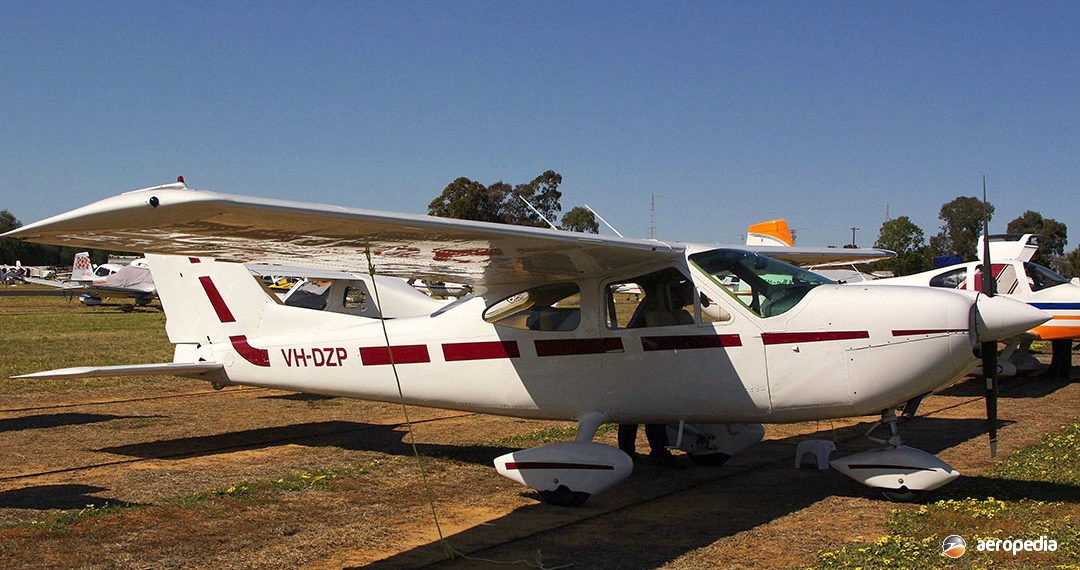Photograph:
Cessna 177 Cardinal VH-DZP (c/n 17700138) at Narromine, NSW in September 2012 (David C Eyre)
Country of origin:
United States of America
Description:
Four-seat light cabin monoplane
Power Plant:
One 112 kw (150 hp) Lycoming O-320-E2D four-cylinder horizontally-opposed air-cooled engine
Specifications:
- Wingspan: 10.86 m (35 ft 7½ in)
- Length: 8.22 m (26 ft 11½ in)
- Height: 2.77 m² (9 ft 1 in)
- Wing area: 16.07 m (173 sq ft)
- Max speed at sea level: 227 km/h (141 mph)
- Cruising speed at 75% power at 2,743 m (9,000 ft): 209 km/h (130 mph)
- Initial rate of climb: 204 m/min (670 ft/min)
- Service ceiling: 3,871 m (12,700 ft)
- Range at 2,743 m (9,000 ft): 1,215 km (755 miles)
- Range at 3,048 m (10,000 ft): 1,327 km (825 miles)
- Empty weight: 608 kg (1,340 lb)
- Loaded weight: 1,066 kg (2,350 lb)
History:
The Cessna 177 series of aircraft, which was first placed in production in 1967, was originally released in two main models, the 177 and the Cardinal. The latter was a deluxe version with many items as standard which were not fitted to the basic Model 177. Of similar size to the Cessna 172, the Model 177 featured a low-profile low-drag design with a fully cantilevered wing, a door on each side, wide-span flaps, and an all-moving tailplane. The models produced between 1967 and 1969 were powered by the 112 kw (150 hp) Lycoming O-320-E2D engine, but this was considered to be a little under-powered so new versions built subsequently were fitted with the more powerful 134 kw (180 hp) Lycoming O-360-A1F6 engine.
In 1970 Cessna made a change in the design of the series. A revised aerofoil improved low-speed handling. A constant-speed propeller and cowl flaps were also fitted. Optional children’s jump seats could be fitted behind the second row of seats. At this time the deluxe version became known as the Cardinal Classic. The wing was said to allow a safer lower-speed approach and, with the new engine/propeller combination, it gave a better take-off, climb, and go-around performance.
The models before and after 1970, other than having different engines, could be distinguished by the latter’s drooping conical camber wing-tips compared with the straight wing-tips. Production of all models in the 177 series ended in 1978.

